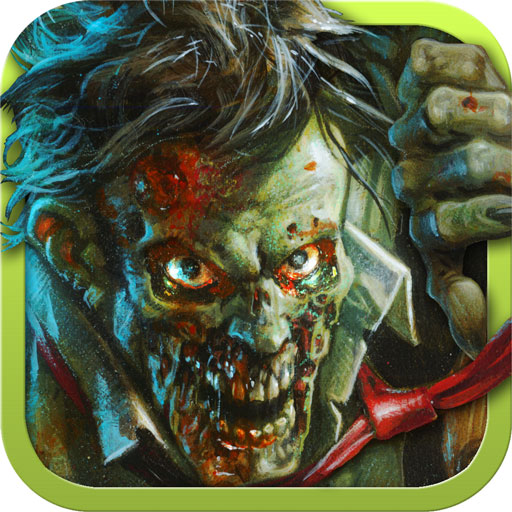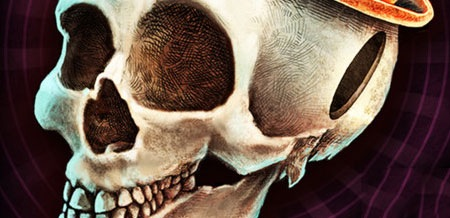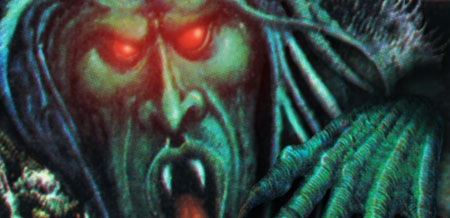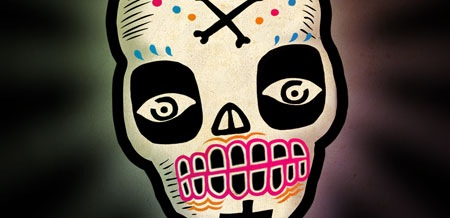Sound's scary: how mobile horror game makers can do more with less
The minds behind Papa Sangre and Fighting Fantasy reveal how they keep us up at night

A good horror game is an extraordinary thing.
With the player in control of a character but the game designer in control of the narrative, there's an almost unparalleled potential for shocks and scares in this genre.
PC classic Amnesia is perhaps the only thing in the world that's ever made me scared to wander about the house at night.
Unfortunately, this 'pleasure' is one largely denied to mobile gamers.
CreepsOh, sure, there are plenty of zombie games on iOS and Android, but they're mostly shooters. We're not talking about the sort of creepy, unsettling experience that slips under your gaming fingernails and worms its way into your brain.
It's not hard to see why this is the case. Even when you've got the lights off and your headphones on, it's hard to feel isolated and engrossed when you're peering at a tiny screen.
So, it's not surprising that some of the better horror game makers on mobile have taken a completely different tack from the creators of traditional survival thrillers on PC and console.

Take the extraordinary sound-based chiller Papa Sangre, for example. Or Tin Man Games's catalogue of Fighting Fantasy horror gamebooks.
What is it that makes these more unusual text- and sound-based horror experiences so successful?
"We're putting pictures in your head," Paul Bennun of Papa Sangre developer Somethin' Else says. "So, we go and dig up the most fundamental, ancient fears of our species. Things you can imagine without having seen them."
Bennun gives the following example: "'Mind lice' are much more horrible than 'mind worms'. Imagine those electron microscope pictures of gaping insect maws, chewing your skin."
When put that way, it's clear how the developer of a text-based gamebook can build an atmosphere so successfully and richly. And that's why Tin Man focuses on the words, rather than adding lots of multimedia to its apps.

"As soon as you make the text less of the focus - by adding graphics, for example - it's no longer a gamebook in the traditional sense," Tin Man creative director Neil Rennison says. "We wanted to preserve the reading experience as much as possible."
But he's got bigger plans.
"In future, I hope we see more interactive adult-based horror stories appearing. Imagine a gamebook with the narrative depth and horror of a Stephen King novel."
And the various types of media available are essential to this. "We're planning to include a lot more art effects and move away from the traditional reading interface we currently use."
Sonic boomWhile visual effects are undeniably important in creating scares, horror games often stand and fall on their sound. It's something that Rennison understands well, with Tin Man gamebooks like Blood of the Zombies and House of Hell replete with creepy soundtracks.
And he knew just where to look for inspiration.
"We brief the composer by giving her examples of genre music. And it was pretty easy, as there is a wealth of music available from old horror movies."

Although sound is vital in any game, using it as the basis for an entire game - as the Papa Sangre team did - poses unique special challenges.
"The horror genre works well in sound alone, as those of us blessed with sight are inherently afraid of what they cannot see," Bennun says.
"As audio dramatists, though, we understand not only the power of sound, but also the power of silence. We know when not to put in any speech or sound effects to create a greater fear."
The sequel to Papa Sangre, out this Halloween, features some new gameplay elements. But the focus remains on sound.
"We're still just extending the human body into the world of Papa Sangre," Bennun says. "With binaural audio, the more closely the input matches the output, the more believable the result."
"So, by using the gyro, we're actually getting a far better, purer control scheme than we did in the original."
Given that sound in horror games is usually used to unsettle and shock the player, I was curious about the choice of narrators in the Papa Sangre games.
In the original, you're guided by a reassuring sibilant female spirit. The principal actor in the sequel, meanwhile, is Sean Bean, complete with that homely Northern England drawl. Why those casting choices?
"They avoid cliché," Bennun answers. "We're sick of lazy choice in games. We want the player to be occupying a world with its own rules and a sense of genuine danger."
He's found a good solution to avoiding those clichés. "It has to be unexplored territory to work. Then, you have to put the lines in the hands of someone that understands subtext and surprise."

While I opened by lamenting the lack of quality horror games on mobile, there are a few which make the grade.
My favourite is probably Year Walk, with its brutal plot and disquieting atmosphere. And the creator of The Woods does a decent job of replicating traditional survival-horror on mobile. But I can't resist asking our interviewees for their personal favourites.
Bennun chooses The Walking Dead. "The fact that you get to know the character and can then make choices on its behalf is great."
Bennun's also keen on Eyes. "There is a monster somewhere, which you can only hear but never really see until it's too late."
Rennison surprises me somewhat with his pick: "Limbo scares the whatsits out of me."
It's not something many people would consider a horror game, so I asked him why that's his favourite. "The presentation is spot-on, and there is a genuine creeping horror when you first see those black spider legs."
